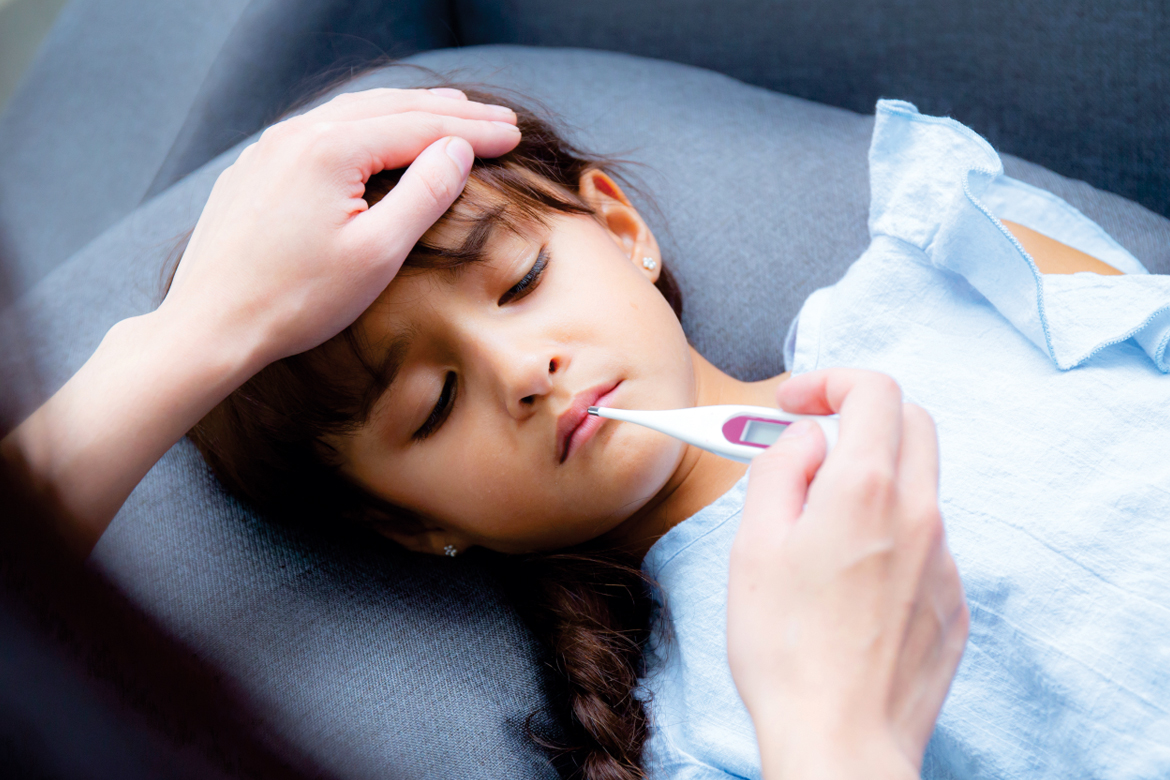The first rainfall after a gruelling summer brings a smile on most faces but the first rain brings with it the onset of infections that travel hand in hand with the monsoon.
A healthy person’s body temperature fluctuates between 36.1 °C (97 °F) and 37.8 °C (100 °F) with the average being 37 °C (98.6 °F).If you have a temperature above this,it means you have a fever. Fever can be caused by various factors, but the most common cause is infection. Fevers are especially common during the monsoon season.Common infections during this season are malaria,dengue,leptospirosis,typhoid and many more.
Symptoms that are common to all infections are fever,chills,headache,body ache,nausea and vomiting, loose stools, abdomen pain,fainting, and muscle pains.These infections can range from mild fever to severe complicated disease with multiple organ failure.
Initial tests to determine monsoon fever causes
Complete Blood Counts | Malaria parasite and rapid malarial antigen detection | Dengue rapid test – nonstructural protein 1 (NS1), Immunoglobulin G (IgG), Immunoglobulin M (IgM) | Leptospirosis IgM rapid test | Liver and kidney profile | Urine routine | Chest X-ray
Sometimes further tests like these may be needed:
Elisa tests for dengue NS1,IgM | Elisa test for leptospirosis IgM | Blood culture | Abdomen sonography | Chest CT scan | ECG | Coagulation profile | Blood group and type
Possible complications include
- Low platelet counts causing a skin rash,abnormal skin bleeding,from the mouth or nose, in your urine,stool or internal organs
- Low blood pressure resulting in shock
- Headache,drowsiness,unconsciousness and fits due to the brain getting affected
- Pain in your upper right abdomen, jaundice, loss of appetite, nausea, vomiting and abnormal bleeding due to the liver getting affected
- Reduced urine output and rise of serum creatinine due to the kidneys getting affected
- Congestion in lungs leading to breathing difficulty and reduced oxygen levels due to the lungs getting affected
- Reduced heart pumping leading to low blood pressure and heart failure due to the heart getting affected
- Yellowish discolouration of eyes due to jaundice and bleeding in the conjunctiva
Treatment
- Malaria (uncomplicated)
Tab. Chloroquine, Tab. Lumefantrine + Artemether (3-day course) - Malaria (complicated)
Injection (Inj.) Artesunate, Capsule (Cap.) Doxycycline, Cap./Inj. Clindamycin (7 days) - Vivax Malaria
Chloroquine course, followed by Tab. Primaquine (14-day course) - Dengue
No specific drug.Treatment is mainly supportive, with intravenous fluids - Leptospirosis (simple)
Cap. Doxycycline,Tab. Azithromycin (7 days) - Leptospirosis (complicated)
Inj. Crystalline Penicillin, Inj. Ceftriaxone (10 days) - Typhoid
Tab. Ciprofloxacin, Tab. Azithromycin, Inj. Ceftriaxone (14 days)
Treatment for complications
- The patient will be admitted: in the ICU and on improvement moved to a room
- Low blood pressure (shock): IV fluids, inotropic drugs
- Low haemoglobin: Blood transfusion
- Low platelets: Transfusion of platelets if the count is below 10000/cumm or if there is any abnormal bleeding
- Acute kidney failure: May require dialysis in ICU
- Acute respiratory distress syndrome: Oxygen, non-invasive ventilator and if it is severe, may require putting tube (endotracheal intubation) and ventilator.
Rush to the hospital in case of:
- Fever more than 40 °C or 104 °F
- Che st pa in, s eve re he ada che, drowsiness,fainting or fits
- Breathing difficulty or bloody sputum
- Persistent loose motion, vomiting, severe pain abdomen,jaundice and an inability to eat well
- Producing less urine
- Bleeding from anywhere, minute red spots in skin
- If your feverish child is lethargic or irritable
 Back to Site
Back to Site